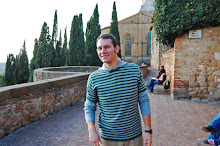Been busy since graduation. If anyone is actually reading this, here is the next section of my senior research.
Loss of Farmland
Given Los Angeles’ developed land, it is possible to believe that there are acres being developed at some alarming rates. “The American Farm Trust calculates that we are losing prime farmland at a rate of 46 acres per hour.” (Squires 26) Lawsuits by the state of California concerning planned development in vast open land have helped direct sprawl away from farmland. “About 3 million acres (roughly the size of Connecticut) of mainly forestland, pastureland, rangeland, and crop land are converted to urbanized landscapes annually.” (Miller 169) Where farmland is being lost, development is going in its place; strip malls and the single-family homes are eliminating prime farmland for non-essential development.
Wherever there is cheap land with stable soil, a housing development is likely to spring up in southern California. Because developments benefit from the same type of soil as crops, there is a constant conflict between retaining farmland or relinquishing it to suburban development. “Deep, well-drained soils and modest slopes are attractive for both farming and development.” On these areas of farmland, “according to the American Farmland Trust, counties with high levels of both prime farmland and development pressure account for 79 percent of our nation’s fruit, 69 percent of our vegetables, 52 percent of our dairy products, and over 25 percent of our meats and grains.” (Squires 26) With the continuation of development in the region, these new developments are being planned with the car in mind, which means bigger parking lots, larger roads, air pollution, the erosion of walkways, and the loss of nature. “The amount of developed land has quadrupled in 50 years, consuming a third of our most productive farmland and more than half of all wetlands (91% in California) and it's bumping up against the boundaries of national parks, forests and other protected lands.” (Ohland, Los Angeles Times)
Los Angeles in recent years has seen suburbs of its city bump up against the Angeles National Forest and also threaten other national and state protected sites together with prime farmland.
Loss of Public Space in Los Angeles
As the people of southern California watch their natural landscape being changed by sprawl, it would be in the best interest of Los Angeles to begin designating more land and property for parks and public open space rather than residential or non mixed-use development. Over 31 million people call California home, while over 9 million people reside in Los Angeles County, and millions of others inhabit Orange County and Riverside County. Los Angeles “[h]as the smallest percentage of space devoted to parks in any major American city — a paltry 4 percent — most of it in the rough Santa Monica Mountains.” (Fleischer, L.A. Weekly) On top of that, “[n]o other Urbanized Area provided so little land per resident as Los Angeles (0.11 acre)…[and] despite accepting the densest living conditions in the country…the Los Angeles Area sprawled across another 394 square miles of orchards, farmland, natural habitat and other rural land.”
(Miller 184) The reason for this is the addition of 3.1 million residents from 1970 to 1990.
The population’s proximity to open space in Los Angeles is deficient; in crowded urban areas of “southern California, only one of four residents lives within 440 yards of a neighborhood playground or park [and] in low-income neighborhoods, 1000 people, on average, share a third of an acre of public open space.” In May of 2009, the California State Senate Assembly passed a bill that would allow parks to be built on utility right-of-way property. This bill, if signed into law, will bring green open space to areas of Los Angeles that lack access to parks, particularly in low-income areas. “AB 521 [is] [a] [bill] [that] will give thousands of kids places to play, and bring more green space to our urban areas." (Roosevelt, Los Angeles Times) Efforts like this ensure that there will be opportunities to transform land into something as an antidote to sprawl.
Monday, June 22, 2009
Part Five and Six
Subscribe to:
Post Comments (Atom)

No comments:
Post a Comment